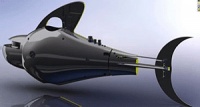Robotic fish to monitor water pollution
Visitors to the Science Museum in London will be given an opportunity to see the latest weapon in the fight against water pollution – a fully automated robotic fish that has been developed by European Union (EU) scientists.

BMT Group, a design, engineering and risk management consultancy, is leading the development of the robotic fish, which are being built by Prof Huosheng Hu and his robotics team at the School of Computer Science and Electronic Engineering at Essex University.

Luke Speller, senior research scientist at BMT Group, said: ’Currently, monitoring pollution in the sea is cumbersome. You have to send divers down to collect water samples, which we then test in a lab. This can take days and needs staff and expensive equipment. Our robotic fish will constantly test for pollution to give instant results without delay.’
Housed at the Science Museum’s new Antenna science news gallery, which opens on 26 June, the robotic fish – which cost approximately £20,000 to make – will soon be undergoing sea trials to test their ability in monitoring pollution.
The three-year research project, named SHOAL, is being funded by the European Commission and is being developed to provide a new solution to detecting pollution.
Register now to continue reading
Thanks for visiting The Engineer. You’ve now reached your monthly limit of news stories. Register for free to unlock unlimited access to all of our news coverage, as well as premium content including opinion, in-depth features and special reports.
Benefits of registering
-
In-depth insights and coverage of key emerging trends
-
Unrestricted access to special reports throughout the year
-
Daily technology news delivered straight to your inbox










Water Sector Talent Exodus Could Cripple The Sector
Maybe if things are essential for the running of a country and we want to pay a fair price we should be running these utilities on a not for profit...